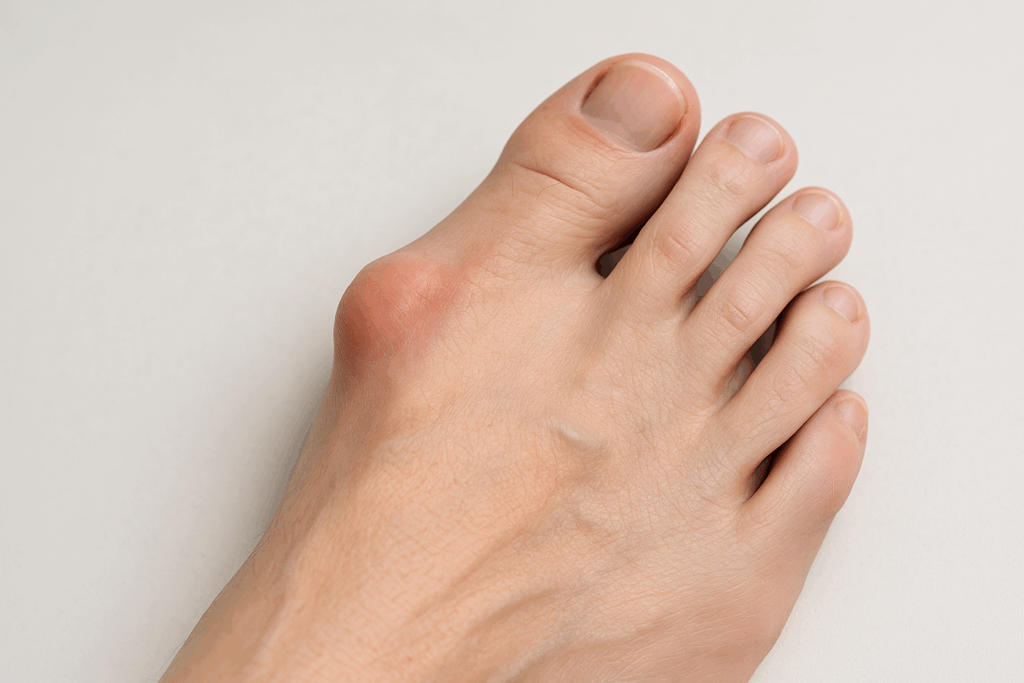Bunion
Bunion&Hammertoes
Table of Contents

What are Bunions and Hammertoes?
A bunion is a lump that develops at the base of your big toe, where the joint meets the ball of your foot. The problem begins when the metatarsal bone behind the joint comes under pressure, forcing it to project out to the side and form a bony lump.
Bunions are more likely to affect you if you wear high-heeled shoes that add extra stress to the joint. Other factors that increase your risk of developing bunions include:
- Big toe that angles inward
- Family history of bunions
- Poor foot structure
- Arthritis in your feet
- Different length legs
In their earlier stages, bunions are more unsightly than anything else, but they become increasingly painful as they develop. Wearing shoes can be particularly uncomfortable as the bunions press into the side of the shoe, which worsens the inflammation.
The skin over your bunion gets tighter, redder, and shinier, and can be tender to touch, too. Left untreated, bunions can become so painful that it’s difficult to walk.
A hammertoe is a deformity where one of the smaller toes (usually the second, third, or fourth) bends downward at the middle joint, making the toe look like a hammer. Over time, hammertoes can stiffen and become rigid, leading to corns, discomfort, and balance issues.
Both conditions are progressive — meaning they get worse without treatment — but they’re manageable with the right care.
What causes Bunions and Hammertoes?

Common causes include:
Genetics — inherited foot structure or instability
Poor footwear, such as tight shoes or high heels
Foot injuries or trauma
Arthritis or joint conditions
Imbalance in foot muscles or tendons
Flat feet or abnormal gait mechanics
Bunions and hammertoes often appear together and may worsen with age, especially if untreated.
What are the symptoms?

Bunion Symptoms:
Pain and tenderness at the base of the big toe
A visible bump on the inside of the foot
Redness and swelling around the joint
Restricted toe movement
Calluses or corns from overlapping toes
Hammertoe Symptoms:
Toe bends downward at the middle joint
Pain or irritation, especially when wearing shoes
Corns or calluses on the top of the toe
Inflammation and redness
In later stages, the toe may become rigid and unmovable
How are Bunions and Hammertoes diagnosed?
At Toetal Podiatry, we perform a physical exam and gait analysis, followed by in-office imaging (X-rays and ultrasound) to assess bone alignment, joint damage, and the severity of deformity.
These tools help us tailor the most effective treatment plan for your specific case.
When is surgery necessary?
If conservative treatments fail, or the deformity limits your mobility, surgery may be recommended.
For Bunions:
Bunionectomy — removal and realignment of the bony bump
Minimally invasive techniques are available for quicker recovery
For Hammertoes:
Tendon release or transfer
Joint resection or fusion in severe cases
The Toetal Podiatry team performs customized surgical correction based on your anatomy, lifestyle, and recovery goals.
FAQs about Bunions and Hammertoes
Q: Are bunions and hammertoes reversible?
A: They are progressive and not reversible without surgery, but early treatment can slow progression and reduce symptoms.
Q: Is bunion or hammertoe surgery painful?
A: Surgery is done under anesthesia. Pain is manageable post-op, and modern techniques minimize downtime.
Q: How long is the recovery?
A: Most patients return to regular shoes within 6–8 weeks, with full recovery in a few months depending on procedure type.
Q: Can I prevent bunions or hammertoes?
A: Proper footwear, foot exercises, and early intervention can help prevent or slow development.
Our Reviews
EXCELLENTTrustindex verifies that the original source of the review is Google. Dr Erfanian was awesome. Super patient, great bedside manner, and was able to diagnose issues and resolve them more than other doctors were! 10/10!Posted onTrustindex verifies that the original source of the review is Google. Dr. Rahman was amazing. She really explained everything clearly, she worked hard with the pharmacy and my insurance company to make sure I received the best care. Would definitely recommend.Posted onTrustindex verifies that the original source of the review is Google. Honestly, Dr. Wu is one of the best doctors I’ve ever seen. She combines medical expertise, compassion, and efficiency perfectly. I left feeling cared for, confident, and pain-free. Highly, highly recommend her to anyone looking for an excellent podiatrist! I also really appreciated how thoughtful she was when prescribing antibiotics, making sure they were the best choice for my infection and compatible with my lifestyle and job. That level of attention and personalized care is rare.Posted onTrustindex verifies that the original source of the review is Google. Dr. Wu is absolutely amazing! She saw me right away, took X-rays the same day, diagnosed my issue immediately, and even performed an in-office procedure that completely resolved my problem on the spot. She was so kind, gentle, and thorough — she explained every step clearly and made sure I felt comfortable the entire time.Posted onTrustindex verifies that the original source of the review is Google. Dr. Rahman is incredible! She’s extremely knowledgeable and her bedside manner immediately put me at ease. The booking and check in process was seamless and little to no wait time. The receptionists were all very friendly and accommodating. 10/10 highly recommend!Posted onTrustindex verifies that the original source of the review is Google. Dr Rahman was amazing and so helpful! Would highly recommendPosted onTrustindex verifies that the original source of the review is Google. Dr. Wu is is amazing! Super knowledgeable, patient, and caring. She took the time to explain everything clearly and made me feel comfortable throughout the visit. The staff was also very welcoming and efficient. I felt like I was in great hands from start to finish — highly recommend if you’re looking for a podiatrist who really listens and cares.
Our Locations
Contact Us
- 917-261-4291
- 917-594-4881
Locations
- 274 Madison Ave #1001, New York, NY 10016
- 26 Broadway Suite 931, New York, NY 10004

